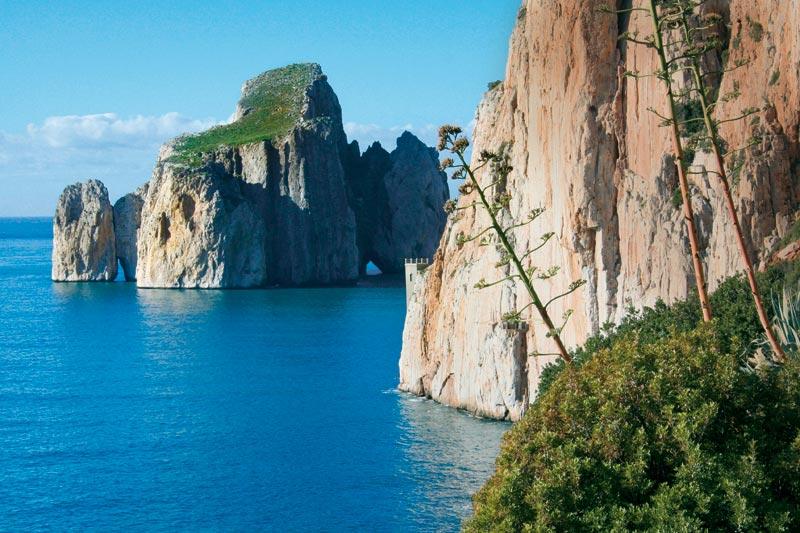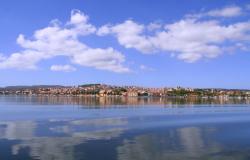The rock has been standing there for some 570 million years. After it formed in the Cambrian period and rose from the sea, it saw the rest of Sardinia form slowly around it, and witnessed the explosion of animal and plantlife, the rise and fall of new species and the origins of men. Now, it presides, still and majestic, over an intricate network of tunnels and passages which form the cave of Su Mannau, near the market town of Iglesias, in southwestern Sardinia.
Two flights of steps climb up a hillside onto the dark maw that is the cave’s entrance. The Cambrian mother-rock stands at the end of the main room, a wall of limestone lapped by a blue pond. It is here that the ancient Sardinians came to worship their gods, offering little lanterns filled with mastic oil which they placed at the foot of a huge speleothem (to honour the male incarnation of the god) and by the pond (to worship the female one). Replicas of the lanterns are still there to remember those times and show how the cult persisted until Roman times.

But the real essence of the cave lies hidden to one the side of the worship room. A door, carved in the rock by miners in the 20th century to open up a narrow natural passageway, leads to an intricate maze of tunnels and rooms where water and time have carved fearsome stalactites, chunky stalagmites, and whimsical niches.
At the heart of it all is the Central Room, a speleothem-encrusted drop of 20 metres, which separates the cave’s right wing—carved by the impetuous Fiume Rapido stream, and open only to speleology tours—from the easily accessible left wing, which is the byproduct of the peaceful Fiume Lento.
Here, a huge, subterranean lake stretches at the foot of hundreds of stalactites, which reach towards the water like fangs in an wild animal’s mouth. In the lake lives a shrimp-like creature, the Stenasellus nuragicus, which is one of the few animals to survive in the dark, damp cave.
From then on, it is a sequence of emerald ponds and candid veils of rock, red-tinged ‘teeth’ and perfectly carved steps that would look man-made if it weren’t for the crystalline rivulets that wet them. But then the last descent reaches the depth of the cave’s left wing, and an abyss opens. It is the Pozzo Rodriguez, a natural well named after a boy who explored the cave in earlier time and fell into the depths, breaking one of his legs. He was saved after three long days by his father, the manager of a local mine, who drafted in some of the most experienced miners and mounted a rescue expedition.
Decades later, a very solid steel and zinc walkway shelters visitors’ feet, but the dark chasm still inspires a healthy dose of fear. Fascinating and terrifying at the same time, the jagged cave floor lies some 23 long, sharp metres below, at the foot of eerie walls carpeted with calcite crystals.
Only a column, rising solitary and massive at the centre of the well, breaks up the nearly fathomless depths. Born of the kiss between a stalactite and a stalagmite, it is a powerful testament to the incessant work of water and time.












